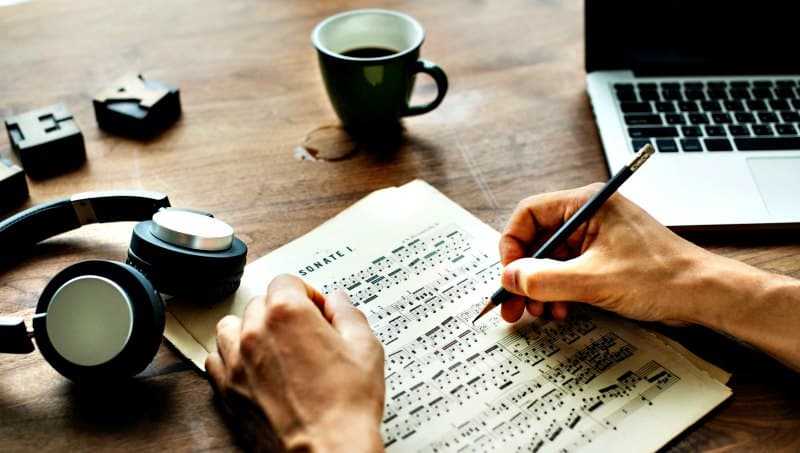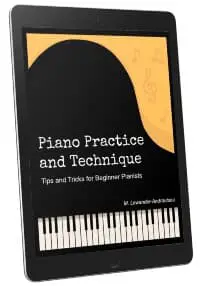- Home
- Basic Piano Theory
- Musical Meter
What Type of Musical Meter is it?
This article may contain compensated links. Please read the disclosure for more info.
Learn to about musical meter and the difference between simple and compound meter by listening and exploring the beat in this free music theory lesson.
Finding The Beat
Musical meter is how we measure the underlying beats in a piece of music. The beat or pulse in music often forms patterns or groupings of beats.
So how can you find the beat?
Dance to it, sing it and jog to it. When you do, you will instinctively feel that the pulse has some stronger beats and some that are softer.
Depending on how these beats group themselves, you get different types of meter.
Organizing the Beat
In some music, the underlying beat can be constant, like in techno, without any significant difference in stronger or softer beats. Other rhythm patterns or sounds may be layered on top, creating rhythm patterns and groupings.
We, humans, like to organize sound in patterns! (This is also how music could be defined, as "Sounds organized in time"). Otherwise, it doesn't make sense to us.
In music notation, the musical meter is written as two fractional numbers (and a couple of symbols) called a Time Signature at the beginning of the staff:

Simple or Compound Musical Meter
In music theory, the musical meter is organized into different groups to help us understand and talk about it better.
First, we organize the meter into two main groups; simple and compound. This has to do with how the main beat can be subdivided.
Errrh?...
Well.. once you have found the underlying beat or pulse in a piece of music, you will notice that there are smaller, faster beats that you can hear "on top of" each beat.
There can be many layers; of course, listen to any drummer and see how s/he layers different rhythms on top of the main beat (usually in the bass drum).
For simple and compound meters, however, we'll only focus on how the main beat can be divided into either two smaller beats or three smaller beats.
Why? Because this has a massive impact on how the music sounds, what style it is etc.

Difference Between Simple & Compound Meters
Example 1: Simple Meter
In the first video example below, you can feel the basic pulse or main beat by stamping along with your foot.
After establishing the underlying beat, tap two shorter beats on each main beat with your hand.
This is called Simple Meter, where the main beat can be subdivided in two. Try to make it three! Didn’t work so well, did it? ;)
Example 2: Compound Meter
In the second video example, you can hear how each beat is divided into threes.
This also gives an entirely different “feel” to the music. This is called Compound Meter; where the main beat can be subdivided into three.
One tip: In simple meter, you often have to “work” a little to find the subdivision of the beat. The main beat is usually easy to hear/feel.
But in compound meter, you often have to do the reverse, “work” a little to find the main beats, since in this music, the feeling of three shorter beats is often “highlighted.”
Practice
You can practice how to feel the difference between simple and compound meters like this:
- Choose a selection of different styles of music.
- Tap your foot or hand along with the beat. Try to find the more prominent main beat.
- Tap with the other hand a smaller beat on the “top” of the main beat.
- Determine if it is better with two (simple) or three (compound) smaller beats.
Duple, Triple or Quadruple
Up to now, you have learned how the main beat can be subdivided. But the beats themselves also form groups.
Both Simple and Compound Meters can be either duple, triple, or quadruple, depending on how the beats are grouped. Interested? So let’s dig deeper! Click to continue:
Recommended Resources
- How to Read Music in 30 Days: Music Theory for Beginners
- Sight Reading and Rhythm Every Day
- Learning to Read Music
- Alfred's Essential Music Theory





